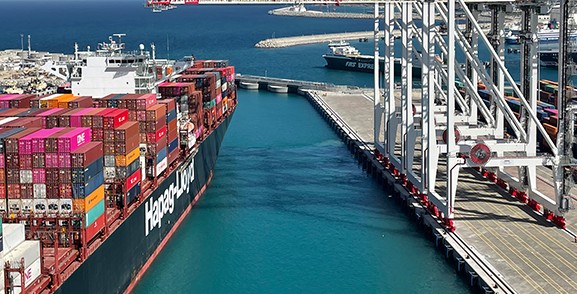Casablanca – Moroccan airports have experienced a significant surge in air traffic during the first eight months of 2024, setting new records and reinforcing the country’s position as a key travel hub in the region. According to the National Airports Office (ONDA), a remarkable 21.41 million passengers were welcomed by the end of August, representing an 18.6% increase compared to the same period in 2023.
This growth was driven by strong performances across the majority of the country’s airports. Rabat-Salé Airport led the charge with a stunning 42.04% increase in passenger traffic, followed closely by Dakhla, which saw a rise of 35.37%. Other airports also reported robust gains, including Marrakech (+30.62%), Agadir (+35.3%), Tangier (+20.71%), and Tetouan (+29.15%).
The surge in domestic and international flights has been pivotal in fueling this growth. Domestic air traffic saw a notable increase of 26.82%, with 2.23 million passengers traveling within the country by the end of August, up from the previous year’s figures. International traffic also expanded significantly, with 19.18 million passengers passing through Moroccan airports, marking a 17.71% rise compared to 2023. This surge is largely attributed to the continued recovery of global travel and the strong performance of Morocco’s key markets, particularly Europe (+18.71%), Africa (+17.41%), and the Middle and Far East (+11.88%).
In addition to passenger growth, Moroccan airports witnessed a boost in aircraft movements, with 158,429 recorded by the end of August, reflecting a 15.08% year-on-year increase. Cargo traffic also saw substantial growth, with air freight reaching over 60,376 tons, a 22.33% rise compared to last year, highlighting the increasing demand for goods transportation in and out of the country.
The growth in air traffic comes as a testament to Morocco’s strategic efforts to enhance its aviation infrastructure, attract more airlines, and boost its tourism sector. With ambitious plans to expand airport capacity and further integrate Morocco into global travel networks, the government is working to support the rising demand for both leisure and business travel.
Morocco, which saw a record 13.1 million tourist arrivals by the end of September, has emerged as a key destination in the post-pandemic travel recovery, benefiting from its diverse offerings and competitive position. In September alone, the country received 1.3 million tourists, a 33% rise compared to the same month last year, further boosting the air traffic performance.
As Moroccan airports continue to break records, the government is keen on further expanding capacity to accommodate the expected increase in air traffic in the coming years. With 25 airports across the country, including 19 international hubs, and ongoing efforts to upgrade facilities, Morocco’s aviation sector is well-positioned to sustain its upward trajectory and support the country’s broader economic growth.
This air traffic boom is not only a sign of recovery but also of Morocco’s resilience and growing appeal on the global stage. As international travel continues to pick up, Moroccan airports are set to handle increasing passenger numbers, making the country an increasingly important player in global aviation.
















